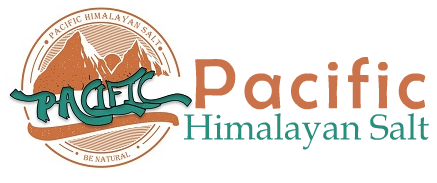
Nestled within the majestic Himalayan mountain range lies a treasure trove of natural wonder – Himalayan pink salt. Renowned for its distinct pink hue and purported health benefits, this mineral-rich salt has garnered attention worldwide. But beyond its culinary uses, Himalayan pink salt boasts a fascinating history, geological origins, and diverse applications that extend far beyond the kitchen. Join us on a journey to explore the captivating world of Himalayan salt and uncover its myriad wonders.
Geological Origins:
Himalayan pink salt, also known as Himalayan rock salt. It is believed to have formed millions of years ago during the Precambrian era. As the Earth’s crust shifted and tectonic plates collided, ancient oceans evaporated, leaving behind vast salt deposits trapped within the layers of the Himalayan mountains. Over time, these deposits were buried deep beneath the Earth’s surface, where immense pressure and geological processes transformed them into the crystalline salt we know today.
The distinctive pink hue of Himalayan salt is attributed to the presence of trace minerals such as iron oxide, magnesium, potassium, and calcium, which impart its unique coloration. These minerals not only contribute to the salt’s aesthetic appeal but also purportedly enhance its nutritional profile and therapeutic properties.
Himalayan Salt Properties and Cultural Significance:
Throughout history, salt has held immense cultural and economic significance, revered for its ability to preserve food, enhance flavor, and even symbolize purity and prosperity in various societies. In the Himalayan region, salt has been treasured for centuries, with ancient salt mines dating back thousands of years.
In traditional Himalayan culture, salt was not merely a culinary staple but also held ritualistic and ceremonial importance. It was used in religious ceremonies, purification rituals, and even as a form of currency in some communities. The reverence for salt in Himalayan culture underscores its deep-rooted significance and enduring legacy in the region.
Culinary and Wellness Applications:
Himalayan pink salt has gained popularity in recent years not only for its culinary versatility but also for its purported health benefits. Himalayan salt is typically hand-mined and minimally processed, preserving its natural mineral content.
In the kitchen, Pacific Himalayan Salt is prized for its delicate flavor and subtle mineral notes, enhancing dishes with a nuanced depth of taste. Its distinctive pink crystals make it a visually striking addition to both savory and sweet recipes.
Pink salt has also found a niche in the wellness industry, touted for its purported therapeutic properties. Advocates claim that Himalayan salt lamps, crafted from large chunks of salt crystals, can purify the air, reduce electromagnetic radiation, and promote relaxation and well-being through the release of negative ions.

Spa and Beauty Treatments:
In addition to its culinary and wellness applications, Himalayan salt is also prized for its potential skincare benefits. Himalayan salt is believed to possess exfoliating, detoxifying, and moisturizing properties. It also making it a popular ingredient in spa treatments and beauty products.
Himalayan salt scrubs, bath salts, and salt therapy sessions have gained popularity for their purported ability to nourish the skin. It also promote circulation, and soothe muscle aches and pains. From luxurious spa experiences to DIY home remedies, Himalayan pink salt offers a natural and holistic approach to skincare and self-care.
Sustainable Harvesting Practices:
The demand for pink salt continues to grow. The concerns have arisen regarding the environmental impact of its extraction and production. While best Himalayan pink salt suppliers are generally considered more environmentally friendly than conventional salt mines, responsible harvesting practices are essential to preserve the fragile ecosystem of the Himalayan region.
Efforts are underway to promote sustainable mining practices, and support local communities dependent on salt mining for their livelihoods. By prioritizing environmental stewardship and ethical sourcing, stakeholders aim to ensure the long-term viability of Himalayan salt production.
Health Claims and Considerations:
While enthusiasts often tout Pink salt health benefits, it’s essential to approach these claims with a critical eye and an understanding of the scientific evidence.
Rich in Essential Minerals:
Pink salt boasts a mineral-rich composition, containing trace elements like magnesium, potassium, calcium, and iron. These minerals are vital for various bodily functions, including nerve function, muscle contraction, and bone health.
Balancing Electrolytes:
The sodium and potassium content in Himalayan salt helps maintain electrolyte balance, crucial for hydration, nerve impulses, and muscle function. Its balanced sodium-to-potassium ratio may support electrolyte balance without the adverse effects of excessive sodium consumption.
Supporting Respiratory Health:
Salt therapy, practiced for centuries, involves inhaling salt particles to alleviate respiratory conditions such as asthma and allergies. Himalayan salt lamps emit negative ions believed to improve air quality, reducing airborne pollutants and allergens.
Improving Skin Health:
Used in skincare products and spa treatments, Himalayan salt exfoliates, detoxifies, and hydrates the skin. Its mineral content may soothe irritation, reduce inflammation, and improve skin barrier function, promoting smoother, radiant skin.

Enhancing Digestive Health:
Himalayan salt’s mineral content and alkaline pH may support digestive health by promoting proper pH balance and aiding digestion. While scientific evidence is limited, anecdotal reports suggest it may alleviate symptoms of indigestion and bloating.
Blood Pressure Regulation:
The potassium content in Himalayan salt helps counteract sodium’s effects on blood pressure regulation, promoting vasodilation and fluid balance. Incorporating it into a balanced diet may have a modest beneficial effect on blood pressure control.
Global Impact and Market Trends:
The growing popularity of pink salt has spurred a global market for this unique commodity. Now the demand is extending far beyond the borders of the Himalayan region. From gourmet chefs and wellness enthusiasts to spa-goers and beauty aficionados, consumers around the world are embracing Himalayan salt products for their perceived quality and natural appeal.
This surge in demand has led to increased scrutiny of the Himalayan salt industry’s practices, particularly concerning sustainability, fair labor practices, and environmental impact. Consumers become more conscientious about the origins and production methods of the products they purchase. There is a growing emphasis on transparency and ethical sourcing within the Himalayan salt market.
Certifications such as Fair Trade and Organic are becoming increasingly sought after by consumers seeking assurance that the products they buy align with their values of social responsibility and environmental stewardship. By supporting brands and producers committed to ethical practices and sustainable sourcing, consumers can play a role in promoting positive change within the Himalayan salt industry.
Conclusion:
Himalayan pink salt embodies the intersection of nature, culture, and wellness, captivating enthusiasts with its rich history, geological origins, and diverse applications. From its ancient roots in Himalayan culture to its modern-day prominence in kitchens, spas, and holistic wellness practices, this mineral-rich salt continues to fascinate and inspire.
As we delve deeper into the natural wonders of Himalayan salt, we uncover not only its culinary and therapeutic benefits but also its cultural significance and environmental implications. Purchase Himalayan salt from Pacific Himalayan Salt, trusted wholesale Himalayan pink salt suppliers in USA. Contact us for a premium quality pink salt and elevate your culinary and wellness offerings.







